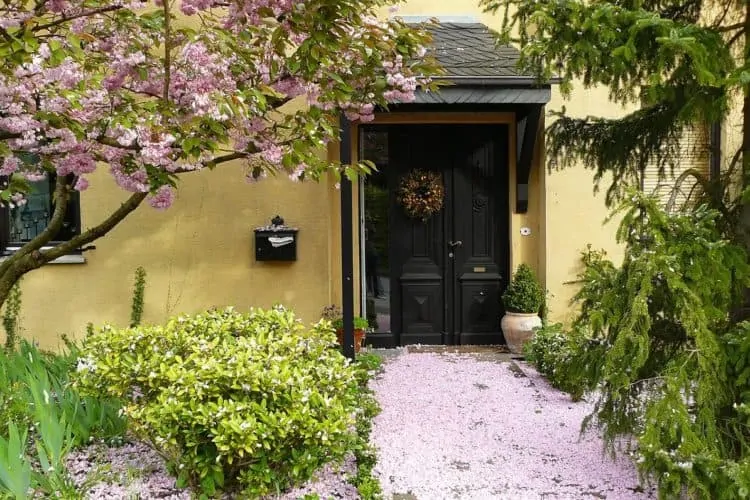
- By Remodel Works
- In Blog
Granny Flat Regulations in San Diego
If you’ve ever thought about building a granny flat, now is the time to do it. California granny flat law and city regulations in San Diego are making it easier and cheaper than ever before to add more space to your property by building a granny flat.
Although the laws are more flexible now, many homeowners panic when it’s time to do a home improvement project or add another structure to their property. The idea of navigating all of the rules and regulations can seem overwhelming. There are so many of them, and most aren’t written in the clearest language. It’s enough to make you want to give up on the idea of building one of the many granny flats in San Diego. However, you don’t have to give up on this home improvement goal – and you also don’t have to navigate the process alone.
The Remodel Works team has created an article to guide you through the city regulations in San Diego and the zoning laws in California to help you stay in compliance with them as you build. Not only will we walk you through the rules and regulations that govern building a granny flat, we’ll also tell you more about this type of structure, why you may want to add one to your property, and what to expect from the building process.
The Burning Question – What Is A Granny Flat?
As this type of housing grows in popularity, more people are throwing around the term “granny flat.” If you’re unsure what it means, you aren’t alone. The name can be a little misleading because it’s not just a dwelling for grandparents. Everyone from live-in nannies, to adult children, can live in these homes. Many property owners even turn granny flats into rental properties, providing the city with more affordable housing.
Granny flat isn’t the only term for this type of structure. You may also hear people call them accessory dwelling units (ADU), accessory apartments, carriage units, in-law suites, mother-in-law units, companion units, or granny pods. The first two terms are common in the building industry and the law, while the rest of them tend to be used by the general public.
All of these dwellings fit the following definition – a separate living area that is designed for one or two residents. They can also be classified as tiny homes. However, the similarities end there. There is a great deal of variation among accessory dwelling units.
For example, some of these structures are above the garage or attached to the primary single-family residence in some other way, while others are separate accessory buildings. The unit’s design, and amenities are also just as unique as the people who live in these residences. One granny flat may simply be a smaller version of the primary residence – complete with a full kitchen. However, another accessory unit may be more simple and modest with just a mini-fridge and a microwave.
Why are Granny Flats Becoming More Popular?
If you live in California, you know that there is a huge demand for affordable housing. You also know that a housing shortage has caused the price of rent and the cost of owning a home are sky-high. California’s median home price last year was a whopping $490,000, which is twice the national average. This might explain why homeownership is at a 70-year low among Californians.
There’s a good reason for all of this. The state’s population is growing rapidly. Over the last decade, 80,000 homes have been built each year. It might sound impressive, but builders would need to construct 100,000 more homes a year to keep up with California’s projected population growth.
Many homeowners see granny flats as the solution to the California housing crisis. These structures are versatile, which allows property owners to rent them to earn extra income each month. These modular homes are also ideal solutions for intergenerational housing. A young family can live in the primary residence and the grandparents can live in the accessory dwelling unit. It also works for young adults and college graduates who need to move back home for a while, but also need their own living quarters and privacy.
Why Build a Granny Flat?
People decide to build accessory dwelling units for many reasons, which is why granny flats are popping up all over the city of San Diego. Due to their versatility and popularity, a granny flat can make your home more appealing and do a lot to increase its resale value. Even if you aren’t looking to sell your home in the near future, you can realize many other benefits of building a granny flat right now.
The biggest and most obvious advantage is that it creates more living space on your property. You can rent this dwelling to give you a second income, which can help you cover your house payment and other expenses. You’ll just want to make sure that the laws in your city and county don’t prevent you from renting your granny flat. In San Diego, you can legally rent your accessory dwelling unit as long as it has a full kitchen.
You can also allow aging relatives or other family members to move in, creating a multigenerational family living arrangement. Although these family members may not be paying rent, there are still many benefits to this arrangement. For aging relatives, a granny flat can be more cost-effective than moving them to an assisted living facility. It can also help the family stay close and give the grandparents the social interaction they need to stay happy and healthy and provide long-term care. Moving family into a granny flat can also be a more affordable way to help with childcare than hiring a nanny.
What Are Granny Flat Regulations in San Diego?
If you’re thinking about building a granny flat, you’re in luck. Recent changes in California state laws have led to changes in San Diego’s granny flat regulations and zoning codes. Now, it’s easier and cheaper than ever before for san diegans to add an accessory dwelling units to single-family homes.
California law limits the ability of a local government or city council to regulate granny flats. Previously, each city and county had its own ordinances that covered everything from off-street parking, to the maximum size of an accessory dwelling unit. These rules often prevented homeowners from building granny flats. Now, cities and counties can only enact an ordinance to govern the building and permitting of granny flats if it is less strict than state law.
While San Diego zoning and building regulations regarding granny flats are online, they can be difficult to understand. To simplify things, here are some highlights that you should be aware of before you start planning to build a granny flat, or a companion unit, as it’s called in the San Diego Municipal Code.
Renting and Selling a Granny Flat
Homeowners are not allowed to sell or convey a granny flat separately from the primary residence. This means that you can’t build an accessory dwelling unit and then decide to sell it as a separate residence later. Your home and your granny flat must be sold at the same time.
Although selling an accessory dwelling unit isn’t allowed, you can rent one in San Diego. Just make sure that it has a full kitchen. This doesn’t mean that it has to be a fancy kitchen, it just needs to have more than a mini-fridge. For the most part, cities have implemented regulations against using these accessory dwellings as short-term rentals. To prevent these units from being used as short-term vacation rentals, homeowners are required to rent the unit attached to their single-family dwelling for a minimum of 30 days.
Maximum Size of a Granny Flat
Before this change in the law, the size of a granny flat could only be 30% of the primary residence. Now you can add more square footage to your lot as this percentage has been increased to 50%. However, the size of the granny flat living space cannot exceed 1200 square feet.
Converting an Existing Structure
It may be less expensive to convert an existing building like a garage into an accessory dwelling unit. Under San Diego regulations, a homeowner can maintain the existing setbacks as long as they are in compliance with the California Building Code and California Fire Code. The structure must be compliant at the time of conversion.
Complying with Parking Regulations
Under the old laws, the number of parking spaces was a big deal. In fact, not having enough parking could prevent you from building a granny flat on your property. San Diego County and the state of California only require that there is one parking space for each accessory dwelling unit or bedroom, so no need to worry about another two-car garage.
San Diego also makes certain exceptions that make this law even more relaxed. If an accessory dwelling unit meets certain requirements, it can be exempt from the minimum parking requirements. This includes granny flats that are 500 square feet or less, in a historical resource area, located in a transit area, or already part of the primary residence.
Connecting Utilities
The issue of connecting utilities for an accessory dwelling unit was once an issue, but the new laws change all of that. Granny flats that are part of an existing structure are not considered a new residence when it comes to calculating connection fees and capacity charges. However, local governments can charge for separate utility connections for units that are separate from an existing structure. These charges must not exceed the burden that the dwelling will put on the water and sewer systems.
The Application Process
When a property owner submits an application to build an accessory dwelling unit, the city of San Diego must approve or deny it within 120 days. The goal of this rule is to speed up the approval process for homeowners.
This review involves looking at specific criteria to make sure that the granny flat will conform to the applicable laws and regulations. The government employees can only deny an application if the accessory dwelling unit would not comply with the law.
These New Laws Have Limits
The changes in California law and San Diego regulations apply to planning and zoning, but not to building codes. Planning and zoning refers to how an owner can use the property, while building codes regulate construction and safety. Before you begin building a granny flat, you will want to make sure that your project is in compliance with all of these laws and regulations.
What to Know About Building a Granny Flat
Before you start the process of designing and building a granny flat, it’s important to know what is involved in the process, including the time and cost to construct one. Although no project is exactly the same, building an accessory dwelling unit costs an average of $250 per square foot. This is the equivalent of $125,000 for a 500 square foot granny flat.
As for how long the project will take, this varies a bit more. Many factors can influence the length of a granny flat build, including the weather, permitting, and how involved the project is. A large accessory dwelling unit with an elaborate design will take longer than a smaller and simpler granny flat.
In addition to thinking about the applicable regulations and the time and cost investment, you’ll also want to consider several things before you build your accessory dwelling unit:
- Where will you build the granny flat? For example, will you be adding onto your home, building above your garage, or building a new structure in the backyard?
- Do you have all of the right permits? Not having the appropriate building permit and approval to build can cause problems later down the road.
- What are your financing options? Most homeowners don’t have the extra cash to cover the entire cost of building a granny flat, so consider looking into financing options.
- What are your wants and needs? Be sure to consider your goals for the project and design preferences.
- Who will you work with? Professionals with experience building granny flats in San Diego can make the building process simple and seamless. Remodel Works has been helping homeowners improve and expand their homes for three decades.
With this information and insight from the Remodel Works team, you can stay in compliance with granny flat regulations in San Diego while adding more living space to your property.
For more information about granny flats, check out our articles on zoning laws in California and what is a granny flat?











